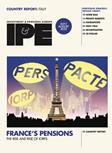Pakistan set to become investment hotspot
The investment case is fundamentally sound and based on Pakistan’s cheapness compared to some of its neighbours, supported by a growing economy fuelled by substantial inflows from the Middle East. It is one of the cheapest markets in Asia, with above average growth and high dividend yields.
You have now reached your article limit
Already a registered user or member? Sign in here
To continue reading, register free today for access
Registration also includes access to

Five reasons to register today
- Access to IPE articles from our award-winning editorial team
- Unique IPE market data, rankings and tables
- In-depth interviews with pension fund leaders
- Extensive coverage of latest asset class trends
- Comprehensive archive of data, research and intelligence







